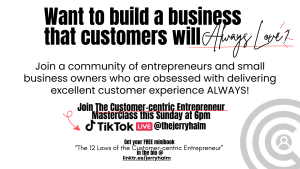
By J. N. Halm
The Competitive Intelligence Gap
Another manifestation of this tendency to build for nobody is the propensity to ignore competitive dynamics. Product-obsessed entrepreneurs often believe that superior quality alone will guarantee success.
They assume that customers will naturally recognise and choose the better product, regardless of price, availability, marketing, or convenience factors.
In my case, I was totally convinced that I had come across the best products in the market. The ingredients were so impressive, at least to me. Just as an example, how many toothpaste do you know on the market that are made of seaweed?
Yes, seaweed. How many soaps on the market do you see made of charcoal and not just any charcoal, but charcoal made from bamboo? So you see, I became so product-obsessed to the point of seeing no reason why a proper market survey was essential.
This assumption reflects a fundamental misunderstanding of how customers make decisions. In reality, customers rarely choose products based solely on objective quality metrics. They consider a complex array of factors, including price, convenience, brand familiarity, social proof, and emotional appeal. A slightly inferior product that is easier to find, more affordable, or better marketed often wins in the marketplace.
Over three decades ago, a seminal study published in the April 1990 edition of the Journal of Marketing demonstrated that market orientation—which includes customer focus, competitor orientation, and inter-functional coordination—has a significantly positive relationship with business performance. The study was titled “Market Orientation: The Construct, Research Propositions, and Managerial Implications“. Yet many Ghanaian entrepreneurs continue to operate as if they exist in a competitive vacuum.
The Innovation Paradox
Ironically, the obsession with product excellence often inhibits rather than enhances innovation. When entrepreneurs are too attached to their original product concept, they become resistant to the modifications and pivots that customer feedback might suggest. They view customer-driven changes as compromises rather than improvements.
True business innovation comes from the intersection of technical capability and customer insight. The most innovative companies are not necessarily those with the most advanced products, but those that find novel ways to solve customer problems. This requires maintaining a delicate balance between product expertise and customer empathy.
A study titled “Responsive and Proactive Market Orientation and New-Product Success” published in the August 2004 edition of the Journal of Product Innovation Management found that customer orientation and inter-functional coordination have significantly positive relationships with innovation orientation.
In other words, companies that stay close to their customers are more likely to innovate successfully than those that focus primarily on internal product development. This makes perfect sense because more often than not, customers have unique ideas about how their problems can be solved—and it is only by staying close to them that you can find out these distinctive ways.
The Service Dimension
The customer-centricity deficit becomes even more apparent when we consider the service dimension of business. Many Ghanaian entrepreneurs treat customer service as an afterthought—something that happens after the sale rather than an integral part of the value proposition.
Customer-centric businesses understand that the product is just one component of the total customer experience. They recognise that how customers feel during and after the purchase process often matters more than the technical specifications of what they bought.
This understanding requires a fundamental shift in perspective. Instead of asking “How can we make our product better?” customer-centric businesses ask “How can we make our customers’ lives better?” This subtle difference in focus leads to dramatically different business strategies and outcomes.
The Financial Reality
The financial implications of product obsession are severe and measurable. Product-focused businesses typically experience higher customer acquisition costs because they rely primarily on convincing customers to appreciate their product rather than solving problems customers already recognise.
They also tend to have lower customer retention rates because their focus on product excellence often comes at the expense of service excellence and customer relationship management.
Customer-centric businesses, by contrast, often enjoy lower marketing costs because satisfied customers become advocates. They achieve higher customer lifetime values because they build relationships rather than just making transactions.
They also tend to be more resilient during economic downturns because they understand their customers well enough to adapt their offerings to changing circumstances.
The Path Forward
Transforming from product-centricity to customer-centricity requires both mindset shifts and practical changes in how businesses operate. It starts with accepting that your product, no matter how excellent, is meaningless unless it creates value for customers in ways they recognise and appreciate.
The first step is developing genuine customer intimacy. This means spending time with customers in their environment, understanding their daily challenges, and observing how they currently solve the problems your product is designed to address. It means asking better questions—not “Do you like our product?” but “What is the most frustrating part of your current process?”
The second step is building customer feedback into every aspect of business operations. Customer-centric businesses do not just collect feedback; they create systems for acting on it quickly and effectively. Customer complaints do not frustrate customer-centric entrepreneurs, rather complaints energise them. They do not get defensive when customers complain because they know that complaining customers are offering free consulting for product improvement. Customer-centric entrepreneurs understand that customer input is not criticism of their product but intelligence for improving their business.
The third step is measuring success differently. Instead of focusing primarily on product-related metrics like quality scores or technical performance, customer-centric businesses prioritise customer-related metrics like satisfaction scores, retention rates, and referral rates. Customer-centric entrepreneurs measure what matters to customers.
The Competitive Advantage
In Ghana’s current business environment, customer-centricity represents a significant competitive advantage precisely because so few businesses practice it consistently. While competitors are busy perfecting their products, customer-centric businesses are busy understanding their markets. While others are improving features, customer-centric businesses are improving experiences.
This advantage becomes even more pronounced as Ghana’s economy becomes increasingly sophisticated and competitive. As customers have more choices, those businesses that understand and serve customers best will increasingly dominate their markets.
The Innovation Opportunity
For Ghanaian entrepreneurs, embracing customer-centricity does not mean abandoning innovation or accepting mediocrity in product development. Instead, it means channelling innovation toward customer value rather than technical elegance. It means using customer insight to guide product development rather than hoping customer demand will materialise around existing products.
The most successful businesses find ways to be both customer-centric and innovation-driven. They use deep customer understanding to identify opportunities for breakthrough products and services. They innovate not just in what they make, but in how they deliver value to customers.
The Cultural Shift
Ultimately, addressing Ghana’s business failure rate requires a cultural shift in how we think about entrepreneurship. We need to celebrate entrepreneurs who build lasting customer relationships as much as we celebrate those who create impressive products. We need business education that emphasises customer development alongside product development. We need success stories that highlight customer insight as much as technical innovation.
This shift will not happen overnight, but it can begin with individual entrepreneurs who choose to prioritise customer understanding in their business strategies. As these businesses succeed and create jobs, they will demonstrate the value of customer-centricity to the broader entrepreneurial community.
The choice facing Ghanaian entrepreneurs is clear: continue falling in love with products while customers remain strangers, or begin the more challenging but ultimately more rewarding work of building businesses around customer needs. The statistics suggest that those who choose the latter path will be far more likely to build businesses that not only survive but thrive in Ghana’s competitive marketplace.
In the end, business success is not about having the best product—it is about being the best solution to customer problems. Until more Ghanaian entrepreneurs embrace this fundamental truth, we will continue to see brilliant products failing in the marketplace and talented entrepreneurs closing businesses that could have succeeded with better customer focus.
The product is not the business. The customer is the business. Everything else is just details.

The post Building for nobody: The Product-Obsessed Entrepreneur Problem (cont’d) appeared first on The Business & Financial Times.
Read Full Story





















Facebook
Twitter
Pinterest
Instagram
Google+
YouTube
LinkedIn
RSS